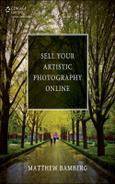Torsten Andreas Hoffmann is an author, photographer, and conductor of photography workshops. He has written articles about image design for several magazines, including Photography, LFI Leica Fotographie International, ct Special Digital Photography, and Digital Photography (Hungary). In his workshops, Hoffmann leads participants toward their individual photographic path. He focuses primarily on black-and-white photography and conceptual photography.
Hoffmann became internationally known for his work New York, New York, a book of photographs of New York City both before and after the attack on the World Trade Center (Kunstverlag Weingarten). His classic work, The Art of Black and White Photography (Rocky Nook) is currently in its second edition. He has also published art calendars through German publishers Kunstverlag Weingarten, Dumont, and ars vivendi.
Hoffmann was born in 1956 in Dusseldorf, Germany, and studied education with an emphasis on photography at the Academy of Fine Arts in Braunschweig. He has gone on photography tours in many places around the world, including India, Indonesia, Mexico, Nepal, Turkey, the USA, the Sahara, and the United Arab Emirates. His work has appeared in numerous exhibitions in renowned galleries in Salzburg, Frankfurt, and Berlin, and has been featured in over 20 photography books. Numerous works hang in private collections. He is a member of the BBK Artists Guild of Frankfurt, the Munich LOOK picture agency, and the German Society of Photographers (DGPh).
)
Project Editor: Maggie Yates
Translator: Susan Schlesinger
Copyeditor: Maggie Yates
Layout: Hespenheide Design
Cover Design: Helmut Kraus, www.exclam.de
Printer: Friesens Corporation
Printed in Canada
ISBN 978-1-937538-53-8
1st Edition 2014
2014 by Torsten A. Hoffmann
Rocky Nook Inc.
802 East Cota St., 3rd Floor
Santa Barbara, CA 93103
www.rockynook.com
Copyright 2014 by dpunkt.verlag GmbH, Heidelberg, Germany
Title of the German original: Fotografie ale Meditation
ISBN: 978-3-86490-031-0
All rights reserved
Library of Congress Cataloging-in-Publication Data
Hoffmann, Torsten Andreas, 1956
Photography as meditation : tap into the source of your creativity / by Torsten Andreas
Hoffmann. -- 1st edition.
pages cm
Includes bibliographical references and index.
ISBN 978-1-937538-53-8 (softcover : alk. paper)
1. Photography--Psychological aspects. 2. Photography--Philosophy. 3. Composition (Photography) 4. Meditation. 5. Creative ability. I. Title.
TR183.H63 2014
770.1--dc23
2014017097
Distributed by OReilly Media
1005 Gravenstein Highway North
Sebastopol, CA 95472
All rights reserved. No part of the material protected by this copyright notice may be reproduced or utilized in any form, electronic or mechanical, including photocopying, recording, or by any information storage and retrieval system, without written permission of the publisher.
Many of the designations in this book used by manufacturers and sellers to distinguish their products are claimed as trademarks of their respective companies. Where those designations appear in this book, and Rocky Nook was aware of a trademark claim, the designations have been printed in caps or initial caps. All product names and services identified throughout this book are used in editorial fashion only and for the benefit of such companies with no intention of infringement of the trademark. They are not intended to convey endorsement or other affiliation with this book.
While reasonable care has been exercised in the preparation of this book, the publisher and author assume no responsibility for errors or omissions, or for damages resulting from the use of the information contained herein or from the use of the discs or programs that may accompany it.
This book is printed on acid-free paper.
Meditation and photography have more in common than you might initially think: both deal with the present moment, both demand the highest degree of awareness, and both are most attainable when the mind is empty and free from distracting, outside influences.
Table of Contents
Thoughts on Photography and Meditation
The recent phenomenon of mass accessibility to digital cameras has produced a generation that records everything, even the most benign moments. While this means that photographs have become a form of mass communication, it also means that millions of thoughtless photographs are taken on any given day. However, and despite the capriciousness of the art market, the demand for conscious, reflective photography has become even greater. For instance, the works of Andreas Gursky, one of the worlds most highly paid photographers, have demanded close to a million US dollars for a single largescale photograph.
Increasingly, people in the digital age of photography are beginning to crave their own inherent form of artistic expression rather than relegating their photography to simple snapshots. This book will teach you to develop your photography in a way that it becomes an expression of your personality. Photography reflects external realities, but also reflects the expression of your individual thoughts and feelings.
The act of photographing, and the resulting photographs, can be very emotional. The medium lends itself particularly well to capturing the variety of moods and feelings in the human range of emotion. This book will guide you to a meditative calm through a sensitive approach to photography, and help you develop your own form of photographic artistic expression.
The term meditation stems from the Latin verb meditari, meaning to contemplate or deliberate.
The term contemplation stems from the Latin verb contemplates, meaning to look at and observe.
Meditation and contemplation can help you discover what you want to express through your photography by accessing and bringing your creative flow into play. Contemplation has certain validity regarding photography because it denotes the act of seeing and considering. Photography is an art medium that compels you to find a quiet state of mind because it requires patience; good photography is generally not a product of a hurried mood. Photography can be a counterpoint to our often fast-paced and sometimes hectic way of life. Both time and space have become scarce in our society, and as a result, more people are interested in meditation and contemplation in order to recover and access their internal rhythm and balance. Meditation allows you to create an internal free space to breathe and exist free of distraction from the outside world.
Meditation and contemplation are common to a variety of religious practices and cultures, including Christianity and Buddhism. In this book, I will relate mostly to Zen meditation, which I consider to be very interesting because it is free from the dogma associated with any particular faith doctrine. Ill begin with the clarification of certain terms. The word Zen stems from the Chinese word Chn, which refers to the meditative state. When I speak about Zen meditation, Im referring to a deep immersion into yourself, aligning yourself with the core of your inner being.
By regularly practicing meditation, you can venture to the source of your creativity and produce images that have depth. That is exactly the premise this book discusses: locating your inner creativity through meditation and contemplation to fully understand your artistic motivations to produce meaningful photographs that have power that radiates for more than a few minutes, hours, or even days.








